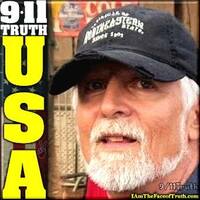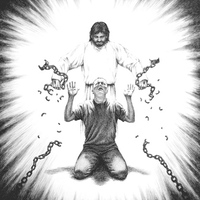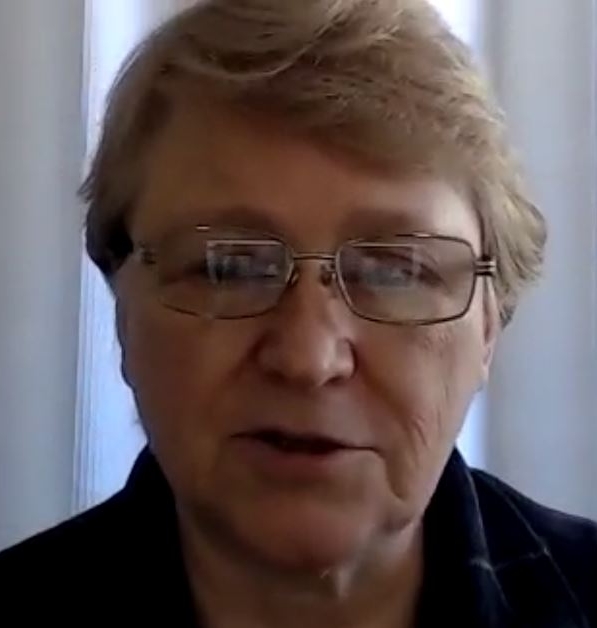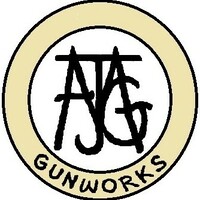Friday, July 26th, 2024
The American Tradition of Abolishing Central Banks
Thomas DiLorenzo
Have We Been Living in an MMT World Since 2008?
Joseph T. Salerno
No Matter Who Wins the November Election, Zionists Will Control the White House
Chuck Baldwin
Why the U.S. Secrecy Surrounding Evan Gershkovich?
Jacob G. Hornberger
Inner Party Putsch Ousted Biden
John Seiler
Equity Crash Fuelling Liquidation
Alasdair Macleod
Unelected Technocrats Are Now the Nation’s Chief Executives
Ryan McMaken
The Global Risks Report- Top Insurance Execs ‘Alarmed’ by ‘Sudden Surge’ in Deaths Among Jabbed Young People
Madge Waggy
Suicide Squad
Nick Turse
US Representatives Jim Jordan & James Comer Must Undertake a Congressional investigation of the Assassination Attempt on Trump
Paul Craig Roberts
Netanyahu’s Speech Was as American as It Gets
Caitlin Johnstone
Bad Actors
Taki Theodoracopulos
https://www.lewrockwell.com
Circles
Posts
Alexandria Ocasio-Cortez just another 1 (of the Squad bitches & who is carelessly SELF disgraced & like ALL else USA-globally TOP-down fill in blanks, name THEM B sides ALL past since dead & sent B4 Jesus, processed & sent 2 Hell & R BURNING ALIVE screaming right NOW, so B it & WILL literally bow B4 Jesus immediately after her NON SELF owned (solely God owns ALL - EVERYTHING - EVERYWHERE on & off dying non human innocent Earth) temporary - momentary human breath ie: death; their ALL going 2 Hell after death via Holy Bible & it's their own individual WHEN IN temporary human LIFE assigned archived-documented Heaven Life Record that will (eternally) CONVICT them each individually, Jesus just has 2 (having solely alone HIS Father's back NO matter what) present 1's record 2 them each, sigh, so B it, let THEM ALL 4EVER BURN -
International Public Notice: Trump's Close Call
By Anna Von Reitz
No matter what political or commercial axe you may have to grind, resorting to personal violence is not the answer. Ideas are ideas. Money is money. But blood is blood.
We are obviously not involved in the political elections process of a foreign corporation acting as a subcontractor to our government, but we do condemn the violence against Donald Trump.
Certainly the Democrats are desperate, with Joe Biden unfit for office by any standard, and Trump's economic track record and folksy nationalism appealing to millions upon millions of voters.
Some people, deluded by narratives and brain-washing may think that the only way to prevent a major Trump victory this fall --- indeed, a historic landslide --- is to kill him.
Some people might consider it tit-for-tat. In view of the many CIA-led government substitution operations that have resulted in the death of duly elected Presidents and foreign political candidates.
Uncle Sam interfered in their elections, so why not interfere in his?
Donald Trump wasn't in office in 2014 when the Putsch happened in Ukraine; that was Obummer's Dirty Hits Squad, but, just as many people have a problem distinguishing between "America" and "the U.S." it's hard for some to distinguish between Presidents.
The failure of the Secret Service to seize and hold such an obvious vantage point says they were in on the hit, just as when they mysteriously vanished the day JFK was assassinated.
It's just a question of whose paws were in it, besides God's.
Was what happened yesterday in Butler County, Pennsylvania, as some Dems are trying to claim, just "a staged theater stunt to gain voter sympathy", or, was it evidence of another British-based political take-down intrigue, one that left Trump unprotected only a few hundred feet from a sniper?
All of which begs the point of learning from history.
Mr. Trump, does it make any sense to leave your personal safety in the hands of men controlled by the British Government? You should at least hire your own body- guards and safety personnel, to ride herd on and fill in the blanks left by MI6.
Just like the Federal Witness Protection Program, they don't have to do anything direct. All they have to do is look the other way for a couple of minutes. Go to the bathroom. Get a cup of coffee. Remember they left their phone in the car. Forget checking the rooftops and access to rooftops -- which they obviously did yesterday.
Donald Trump had no need to buoy up his popularity with any heroics. Half an inch to the left and we'd be looking at the Kennedy assassination all over again.
Ironically, the Dems do have a fantastic and reputable candidate in the wings: RFK, Jr.
Kennedy is easily the most recognizable, the most popular, and most principled candidate the Democrats have to offer, by far, but the problem thus far is that, well, yeah, he is principled. And that doesn't ride well with the New Left.
RFK, Jr., does stand for things beyond himself, and even way beyond his comfort zone. It took a pandemic involving phony vaccines and thousands of dead kids to drag him out onto the field and make it personal, but there he is, nonetheless, that one, lone, sore thumb, Dissenting Voice of the Traditional Democratic Party.
Kennedy could, by rallying the traditional Democratic base, give Trump a reputable run for his money and make it a campaign about meaningful issues.
People watching from the rest of the world often ask--- what is so bad about Donald Trump? He created an economic miracle for you dumb Americans. Why would anyone, Republican or Democrat, kick him for that, even if he has orange hair?
Wall Street and the Billionaires have benefited more from Obummer's pandering and his crushing of the American Middle Class to give the 1% all the gravy, than they profited from DJT's growth initiatives and forward thinking and investment strategies and resource deployments.
It's not that Trump isn't a brilliant businessman compared to any Democrat we've seen in our lifetimes; it's that Trump has aimed at rebuilding the whole economy and infrastructure, instead of treading the wine press for Big Business alone-- which is what Obummer specializes in.
The Lower and Middle Classes of American workers benefited tremendously under Trump's Administration. Like it or not, that's a fact.
Millions of new above-living wage jobs were created. There was even talk of America being able to go back to a One-Income Household model, where one parent could earn enough to allow the other parent to stay home and take care of the kids. Imagine that?
We could have had it as good as most bird species.
But the Big Boys, the Transnationals, are pouty.
Pharma is scared of all the new tech and now they are scared of liability for the pandemic. Big Oil (which means Big Agro, too) is angry, two-blocked, and fettered. Banks are scared and angry, also. Their tattered, ancient, and filthy dirty laundry is coming into view.
They all worry that if America rebuilds, then America will become industrial base competition for China, where most of them are invested up to their chins, hoping to profit themselves off of China's slave labor market.
So, naturally, the Corpos aren't concerned about the benefits of new infrastructure that they already paid for --- in China. They never cared about workers or this country particularly, so they'd rather have Obummer or Joey B. handing them "incentive payments" all day long.
Trillions and trillions in sweet cream Country Gravy, all day long.... TARP, Bail-Outs, Bail-Ins, everything short of a Papal Dispensation.
The Stock Market isn't happy with Trump, either. They don't like the move from NYC to Tel Aviv.
The new tech stocks are like mating piranhas in muddy water, and the pressure to self-invest and the run-ups and costs that causes a company is nothing but painful.
With ten year bonds in the tank and no relief in sight, more than half of the Fortune 500 CEOs have either quit or been caught quietly selling off their own company share stocks. Even Warren Buffet.
All of which leads to the ironic situation: Donald Trump, ostensibly the Big Business candidate of the Big Business political party --- is now the champion of the average people and wage-earners and farmers of this country. That's why he has the numbers.
While the Dems, at least those in view, are the Big Business candidates-in-fact, the corrupt darlings of Wall Street, the running dogs of the investment banks and feudal corporatocracy. The Kings of the $30,000 a plate fundraising dinner. That's why they have the payola support of the Fringe and the public employee unions in bed for a three-way romp.
And that is why Obummer is on television right now, telling Senior Citizens that their $5 campaign donation to Democratic Party Candidates will make the difference.
It's not true in the case of the Dems, though it might be true for the Republicans, simply because of this inertial flip-flop, that leaves the top Republican candidate at odds with or at least brandishing swords with Big Business Interests from here to Istanbul.
Trump isn't getting the "traditional" Republican support of Big Business. Joe Biden, or whoever the Dem candidate winds up being, is benefiting from all that.
No, Obama is chasing the numbers, trying to elicit the support of masses of disillusioned and disoriented voters, trying to get them to "buy in" and make a commitment, no matter how small, to the Democratic candidate roster.
All this contributes to the confusion overseas, too. Everything is upside down: Republicans for the Common Man? For Labor? For the Middle Class?
For Tax relief? What is this?
Meanwhile, the Democrats are in Never-Never-Land guaranteeing "votes" for illegal immigrants that they are trying to entrap as new collateral for their failing Municipal Corporation (double score!), and otherwise selling everything in sight including immigrant children:
https://www.thegatewaypundit.com/2024/07/democrats-move-protect-illegal-aliens-voting-2024-elections/
https://www.thegatewaypundit.com/2024/07/bombshell-whistleblower-testimony-biden-regime-paying-billions-facilitate/?sfnsn=mo
All this chaos has been brought to us by two miscreant District of Columbia corporations in the business of providing "essential government services" (Article IV of both their Constitutions). If we don't hold them and their Principals accountable, there will be more and worse chaos, here, and throughout the world.
Grapes now cost $8.99 a pound. Laundry soap, baby formula, and shampoo are all under lock and key at the local supermarkets.
As of last week, the U.S. Military has taken over the administrative functions of the Federal and State-of-State government franchises.
The Dems finally admitted that Joe Biden isn't fit for office in the physical and mental sense of "fitness".
A wise woman once said, "By the time you get your vengeance, they won't remember why you did it."
Let's all get our heads out of cranial-anal insertion and think about this: Melania Trump's Husband, and young Barron's Father, a decent man who has done nothing but wish well on this country and this world, almost died yesterday, because someone in the crowd was gullible enough to believe the Talking Heads who have been irrationally demonizing him for pay. For pay.
Donald Trump may be many things, may rise or fall according to his choices and his destiny, and you may like him or not, but he does not deserve to die for the sake of political nonsense.
We count 90% of what passes for "important" in the political realm as nonsense.
What we care about is getting a competent leader for these corporations, someone who will come to terms with history and reality, and help restore lawful government. We could work with Donald Trump. We could work with RFK, Jr.
We couldn't work with Joe Biden, and this isn't even Joe Biden's fault.
We don't know Joe Biden as a man, but we know the challenges we face as a nation and a planet.
Regardless of your political orientation and in spite of all the confusion, please help, if you vote in these political elections, by electing a stable and competent man to the corporate offices.
And please, pass the word--- Donald Trump isn't the devil and doesn't deserve violence. Neither will any Democratic challenger. It's far more important that we learn to govern ourselves than that we endeavor to control anyone else.
Issued by:
Anna Maria Riezinger, Fiduciary
The United States of America
In care of: Box 520994
Big Lake, Alaska 99652
July 14th 2024
See this article and over 4900 others on Anna's website here: www.annavonreitz.com
Videos
Circles
Videos
Posts
Friday, July 26th, 2024
The American Tradition of Abolishing Central Banks
Thomas DiLorenzo
Have We Been Living in an MMT World Since 2008?
Joseph T. Salerno
No Matter Who Wins the November Election, Zionists Will Control the White House
Chuck Baldwin
Why the U.S. Secrecy Surrounding Evan Gershkovich?
Jacob G. Hornberger
Inner Party Putsch Ousted Biden
John Seiler
Equity Crash Fuelling Liquidation
Alasdair Macleod
Unelected Technocrats Are Now the Nation’s Chief Executives
Ryan McMaken
The Global Risks Report- Top Insurance Execs ‘Alarmed’ by ‘Sudden Surge’ in Deaths Among Jabbed Young People
Madge Waggy
Suicide Squad
Nick Turse
US Representatives Jim Jordan & James Comer Must Undertake a Congressional investigation of the Assassination Attempt on Trump
Paul Craig Roberts
Netanyahu’s Speech Was as American as It Gets
Caitlin Johnstone
Bad Actors
Taki Theodoracopulos
https://www.lewrockwell.com
Alexandria Ocasio-Cortez just another 1 (of the Squad bitches & who is carelessly SELF disgraced & like ALL else USA-globally TOP-down fill in blanks, name THEM B sides ALL past since dead & sent B4 Jesus, processed & sent 2 Hell & R BURNING ALIVE screaming right NOW, so B it & WILL literally bow B4 Jesus immediately after her NON SELF owned (solely God owns ALL - EVERYTHING - EVERYWHERE on & off dying non human innocent Earth) temporary - momentary human breath ie: death; their ALL going 2 Hell after death via Holy Bible & it's their own individual WHEN IN temporary human LIFE assigned archived-documented Heaven Life Record that will (eternally) CONVICT them each individually, Jesus just has 2 (having solely alone HIS Father's back NO matter what) present 1's record 2 them each, sigh, so B it, let THEM ALL 4EVER BURN -
International Public Notice: Trump's Close Call
By Anna Von Reitz
No matter what political or commercial axe you may have to grind, resorting to personal violence is not the answer. Ideas are ideas. Money is money. But blood is blood.
We are obviously not involved in the political elections process of a foreign corporation acting as a subcontractor to our government, but we do condemn the violence against Donald Trump.
Certainly the Democrats are desperate, with Joe Biden unfit for office by any standard, and Trump's economic track record and folksy nationalism appealing to millions upon millions of voters.
Some people, deluded by narratives and brain-washing may think that the only way to prevent a major Trump victory this fall --- indeed, a historic landslide --- is to kill him.
Some people might consider it tit-for-tat. In view of the many CIA-led government substitution operations that have resulted in the death of duly elected Presidents and foreign political candidates.
Uncle Sam interfered in their elections, so why not interfere in his?
Donald Trump wasn't in office in 2014 when the Putsch happened in Ukraine; that was Obummer's Dirty Hits Squad, but, just as many people have a problem distinguishing between "America" and "the U.S." it's hard for some to distinguish between Presidents.
The failure of the Secret Service to seize and hold such an obvious vantage point says they were in on the hit, just as when they mysteriously vanished the day JFK was assassinated.
It's just a question of whose paws were in it, besides God's.
Was what happened yesterday in Butler County, Pennsylvania, as some Dems are trying to claim, just "a staged theater stunt to gain voter sympathy", or, was it evidence of another British-based political take-down intrigue, one that left Trump unprotected only a few hundred feet from a sniper?
All of which begs the point of learning from history.
Mr. Trump, does it make any sense to leave your personal safety in the hands of men controlled by the British Government? You should at least hire your own body- guards and safety personnel, to ride herd on and fill in the blanks left by MI6.
Just like the Federal Witness Protection Program, they don't have to do anything direct. All they have to do is look the other way for a couple of minutes. Go to the bathroom. Get a cup of coffee. Remember they left their phone in the car. Forget checking the rooftops and access to rooftops -- which they obviously did yesterday.
Donald Trump had no need to buoy up his popularity with any heroics. Half an inch to the left and we'd be looking at the Kennedy assassination all over again.
Ironically, the Dems do have a fantastic and reputable candidate in the wings: RFK, Jr.
Kennedy is easily the most recognizable, the most popular, and most principled candidate the Democrats have to offer, by far, but the problem thus far is that, well, yeah, he is principled. And that doesn't ride well with the New Left.
RFK, Jr., does stand for things beyond himself, and even way beyond his comfort zone. It took a pandemic involving phony vaccines and thousands of dead kids to drag him out onto the field and make it personal, but there he is, nonetheless, that one, lone, sore thumb, Dissenting Voice of the Traditional Democratic Party.
Kennedy could, by rallying the traditional Democratic base, give Trump a reputable run for his money and make it a campaign about meaningful issues.
People watching from the rest of the world often ask--- what is so bad about Donald Trump? He created an economic miracle for you dumb Americans. Why would anyone, Republican or Democrat, kick him for that, even if he has orange hair?
Wall Street and the Billionaires have benefited more from Obummer's pandering and his crushing of the American Middle Class to give the 1% all the gravy, than they profited from DJT's growth initiatives and forward thinking and investment strategies and resource deployments.
It's not that Trump isn't a brilliant businessman compared to any Democrat we've seen in our lifetimes; it's that Trump has aimed at rebuilding the whole economy and infrastructure, instead of treading the wine press for Big Business alone-- which is what Obummer specializes in.
The Lower and Middle Classes of American workers benefited tremendously under Trump's Administration. Like it or not, that's a fact.
Millions of new above-living wage jobs were created. There was even talk of America being able to go back to a One-Income Household model, where one parent could earn enough to allow the other parent to stay home and take care of the kids. Imagine that?
We could have had it as good as most bird species.
But the Big Boys, the Transnationals, are pouty.
Pharma is scared of all the new tech and now they are scared of liability for the pandemic. Big Oil (which means Big Agro, too) is angry, two-blocked, and fettered. Banks are scared and angry, also. Their tattered, ancient, and filthy dirty laundry is coming into view.
They all worry that if America rebuilds, then America will become industrial base competition for China, where most of them are invested up to their chins, hoping to profit themselves off of China's slave labor market.
So, naturally, the Corpos aren't concerned about the benefits of new infrastructure that they already paid for --- in China. They never cared about workers or this country particularly, so they'd rather have Obummer or Joey B. handing them "incentive payments" all day long.
Trillions and trillions in sweet cream Country Gravy, all day long.... TARP, Bail-Outs, Bail-Ins, everything short of a Papal Dispensation.
The Stock Market isn't happy with Trump, either. They don't like the move from NYC to Tel Aviv.
The new tech stocks are like mating piranhas in muddy water, and the pressure to self-invest and the run-ups and costs that causes a company is nothing but painful.
With ten year bonds in the tank and no relief in sight, more than half of the Fortune 500 CEOs have either quit or been caught quietly selling off their own company share stocks. Even Warren Buffet.
All of which leads to the ironic situation: Donald Trump, ostensibly the Big Business candidate of the Big Business political party --- is now the champion of the average people and wage-earners and farmers of this country. That's why he has the numbers.
While the Dems, at least those in view, are the Big Business candidates-in-fact, the corrupt darlings of Wall Street, the running dogs of the investment banks and feudal corporatocracy. The Kings of the $30,000 a plate fundraising dinner. That's why they have the payola support of the Fringe and the public employee unions in bed for a three-way romp.
And that is why Obummer is on television right now, telling Senior Citizens that their $5 campaign donation to Democratic Party Candidates will make the difference.
It's not true in the case of the Dems, though it might be true for the Republicans, simply because of this inertial flip-flop, that leaves the top Republican candidate at odds with or at least brandishing swords with Big Business Interests from here to Istanbul.
Trump isn't getting the "traditional" Republican support of Big Business. Joe Biden, or whoever the Dem candidate winds up being, is benefiting from all that.
No, Obama is chasing the numbers, trying to elicit the support of masses of disillusioned and disoriented voters, trying to get them to "buy in" and make a commitment, no matter how small, to the Democratic candidate roster.
All this contributes to the confusion overseas, too. Everything is upside down: Republicans for the Common Man? For Labor? For the Middle Class?
For Tax relief? What is this?
Meanwhile, the Democrats are in Never-Never-Land guaranteeing "votes" for illegal immigrants that they are trying to entrap as new collateral for their failing Municipal Corporation (double score!), and otherwise selling everything in sight including immigrant children:
https://www.thegatewaypundit.com/2024/07/democrats-move-protect-illegal-aliens-voting-2024-elections/
https://www.thegatewaypundit.com/2024/07/bombshell-whistleblower-testimony-biden-regime-paying-billions-facilitate/?sfnsn=mo
All this chaos has been brought to us by two miscreant District of Columbia corporations in the business of providing "essential government services" (Article IV of both their Constitutions). If we don't hold them and their Principals accountable, there will be more and worse chaos, here, and throughout the world.
Grapes now cost $8.99 a pound. Laundry soap, baby formula, and shampoo are all under lock and key at the local supermarkets.
As of last week, the U.S. Military has taken over the administrative functions of the Federal and State-of-State government franchises.
The Dems finally admitted that Joe Biden isn't fit for office in the physical and mental sense of "fitness".
A wise woman once said, "By the time you get your vengeance, they won't remember why you did it."
Let's all get our heads out of cranial-anal insertion and think about this: Melania Trump's Husband, and young Barron's Father, a decent man who has done nothing but wish well on this country and this world, almost died yesterday, because someone in the crowd was gullible enough to believe the Talking Heads who have been irrationally demonizing him for pay. For pay.
Donald Trump may be many things, may rise or fall according to his choices and his destiny, and you may like him or not, but he does not deserve to die for the sake of political nonsense.
We count 90% of what passes for "important" in the political realm as nonsense.
What we care about is getting a competent leader for these corporations, someone who will come to terms with history and reality, and help restore lawful government. We could work with Donald Trump. We could work with RFK, Jr.
We couldn't work with Joe Biden, and this isn't even Joe Biden's fault.
We don't know Joe Biden as a man, but we know the challenges we face as a nation and a planet.
Regardless of your political orientation and in spite of all the confusion, please help, if you vote in these political elections, by electing a stable and competent man to the corporate offices.
And please, pass the word--- Donald Trump isn't the devil and doesn't deserve violence. Neither will any Democratic challenger. It's far more important that we learn to govern ourselves than that we endeavor to control anyone else.
Issued by:
Anna Maria Riezinger, Fiduciary
The United States of America
In care of: Box 520994
Big Lake, Alaska 99652
July 14th 2024
See this article and over 4900 others on Anna's website here: www.annavonreitz.com
Criminal's of Crime's against (fellow innocent all connected whole NECLEUS species) humanity, ACT thereof reduced-lessened 2 jaywalking?! (partial list however 2 say the least) past-2 date despite & nevertheless worse Coming: USA's '430 PLUS' federal agencies, the so-called security agencies, White supremacy Antifa, TOP-down (political?) liberal's, $ The LEFT, LGBTQiA, abortion committer's & supporter's, BLM (the group), USA's Congress - AOC & The Squad & Democratic Party, Nancy Pelosi, 535 individual member's of USA Congress, Joe Biden & misc else, DOD-Lloyd James Austin/FBi - Christopher Asher Wray/CiA- William Joseph Burns/NSA - Paul Miki Nakasone/USA Government/DOJ/Deep State, Trilateral Commission, Bilderberg Group, the annual meetup Davos human rat's, Globalist's & elite's (web keyword research them & KNOW who they are, they all can't hide), Big Tech, etc fill in the blanks & ALL the publicly known & worse - those NON publicly known vast & various Syndicate's!









